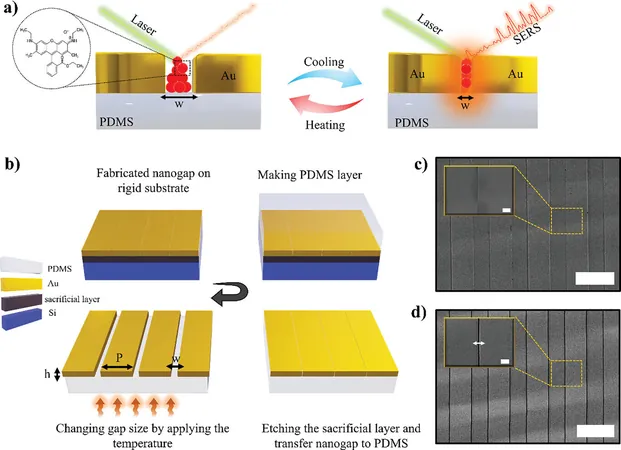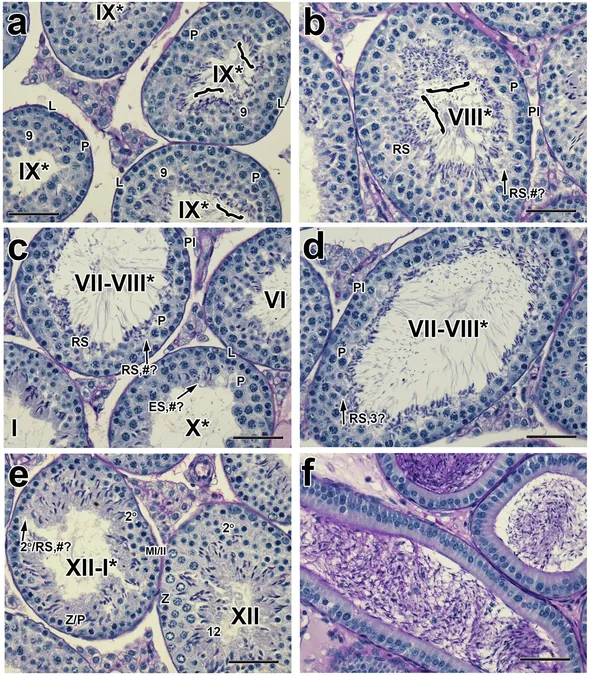
Breakthrough in Molecule Detection: Revolutionary Sensor Technology Unveiled!
2025-03-25
Author: Nur
Introduction
A research team from the Nano Optics Group in the Department of Physics at UNIST has made a groundbreaking advancement in sensor technology with the development of a plasmonic structure capable of precisely adjusting nanometer-sized gaps in response to temperature variations. This innovative technology enhances detection capabilities far beyond those of traditional sensors, allowing for the real-time adjustment of nanogaps to align with the size of specific molecules.
Publication and Contribution to SERS
Published in the prestigious journal Advanced Optical Materials, this research introduces flexible nanogap structures as crucial components in Surface-Enhanced Raman Spectroscopy (SERS). SERS is an advanced analytical technique that amplifies the Raman signals of molecules by leveraging a strong near-field generated by localized surface plasmon resonance from incident light on gold-based metallic nanostructures. This advanced technique can amplify molecular signals by millions of times, making it an essential tool in various scientific fields.
Innovative Aspects of Research
The innovative aspect of this research lies in the utilization of flexible substrates that enable dynamic modulation of nanogaps. This adaptability opens new possibilities for analyzing a broader range of molecule sizes, which previously posed challenges for detection.
Achievement of Enhanced Detection Limits
Through the application of temperature-controlled adjustments, the research team achieved an extraordinary enhancement factor of around 10^7 in SERS signals, successfully reaching detection limits as low as 10^-12 M, which allows for the detection of single molecules! This outstanding precision is a game-changer in the field.
Researcher Insights
Dr. Mahsa Haddadi Moghaddam, the lead researcher, emphasized, "The ability to control nanogaps with temperature changes greatly increases the sensitivity of our sensors compared to conventional SERS technology. This breakthrough holds immense promise for accurate analyses at the single-molecule level, particularly in environmental monitoring and medical diagnostics."
Implications of the Technology
The implications of this technology are vast, from improving disease detection to monitoring environmental pollutants at previously impossible sensitivity levels. As this research progresses, we can expect to see exciting applications emerge that can potentially change the landscape of scientific analysis.
Conclusion
Stay tuned for more updates on this revolutionary technology!


 Brasil (PT)
Brasil (PT)
 Canada (EN)
Canada (EN)
 Chile (ES)
Chile (ES)
 Česko (CS)
Česko (CS)
 대한민국 (KO)
대한민국 (KO)
 España (ES)
España (ES)
 France (FR)
France (FR)
 Hong Kong (EN)
Hong Kong (EN)
 Italia (IT)
Italia (IT)
 日本 (JA)
日本 (JA)
 Magyarország (HU)
Magyarország (HU)
 Norge (NO)
Norge (NO)
 Polska (PL)
Polska (PL)
 Schweiz (DE)
Schweiz (DE)
 Singapore (EN)
Singapore (EN)
 Sverige (SV)
Sverige (SV)
 Suomi (FI)
Suomi (FI)
 Türkiye (TR)
Türkiye (TR)
 الإمارات العربية المتحدة (AR)
الإمارات العربية المتحدة (AR)